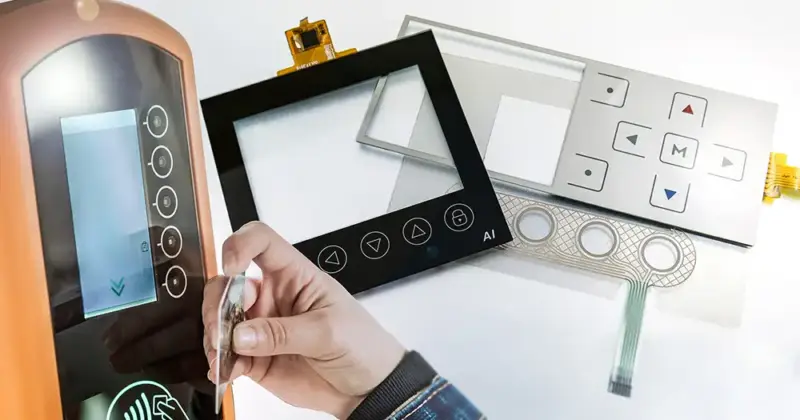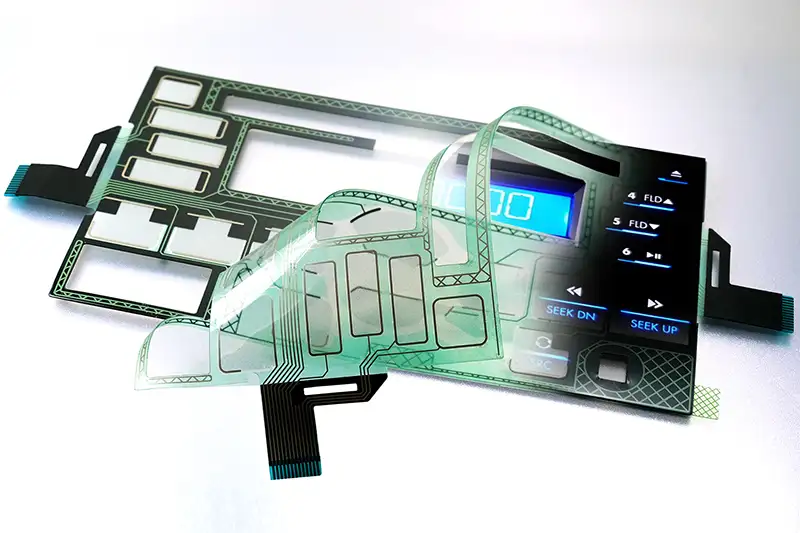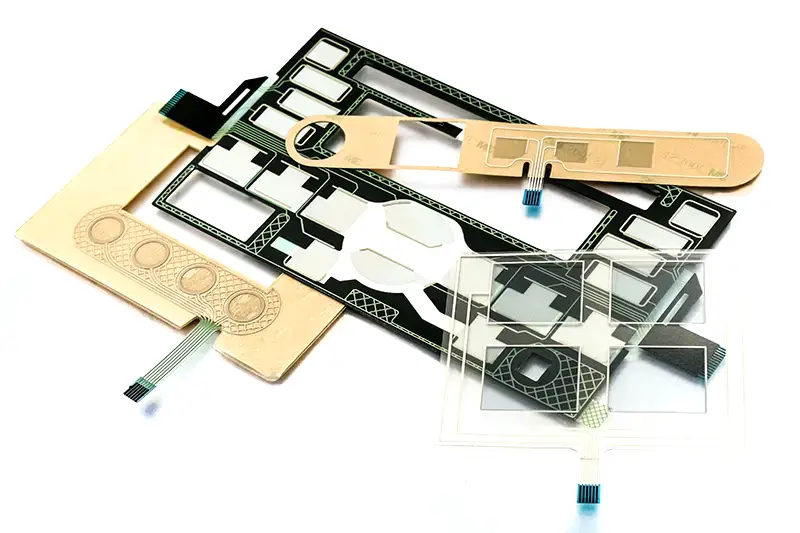Traditional design combined with touch technology

technical articles
Published in Operation & Visualization 03/2024 Article as .pdf >>
Introduction
The development of input devices has made significant progress in the last few decades. Capacitive membrane keyboards combine robustness traditional membrane keyboards with the advanced touch sensitivity of capacitive technologies. This offers an impressive combination of sensitivity, precision and durability, making them attractive for a wide range of applications.
In contrast to conventional membrane keyboards, which react to mechanical pressure capacitive membrane keyboards the electrical conductivity of the human body. A touch results in a change in electrical capacitance, which is detected by sensors and converted into an input signal. This technology does not require physical pressure, making interaction with the device faster and more efficient.
Structure of a capacitive membrane keyboard

The structure of a capacitive membrane keyboard is technologically more sophisticated, but can be made thinner and more flexible by eliminating mechanical switches. As with conventional membrane keyboards, the capacitive version consists of a membrane composite.
The Graphic film The top layer contains the key labels and the keyboard layout. It is usually made of a durable, often transparent material that allows the capacitive sensors underneath to detect the user's touch. As an alternative to a film, a printed surface made of glass or plastic can also be used, creating a very stable input unit. The thickness of these materials should be between 0,2mm and max. 6,0mm.
The one underneath capacitive sensor level consists of a series of conductive pads or surfaces arranged on a layer of insulation. Each pad corresponds to a key on the keyboard. When a finger or other conductive object touches the surface above a pad, the electrical capacitance at that location changes.
The Circuit layer contains the electronic circuitry necessary to measure the changes in capacitance. It translates the changes into electrical signals that can then be interpreted by the computer or device.
There can be one between the circuit layer and the capacitive pads insulation layer be present to avoid electrical interference and increase the precision of the capacitive measurement. The bottom layer with the adhesive film provides structure and support. Connectors or cables connect the keyboard to the hardware. Depending on the design and requirements, capacitive membrane keyboards can also additional features such as backlighting, haptic feedback or integration with touchscreens.
challenges
Despite many advantages, there are challenges such as the lack of noticeable feedback, which can be critical for some applications. Operation with gloves or unintentional activation due to accidental contact are also aspects that must be taken into account. Modern capacitive membrane keyboards therefore increasingly integrate haptic feedback technologies. These simulate physical feedback through vibrations or other tactile responses to provide the user with confirmation of input, thus providing a richer user experience. The Combination of capacitive keyboards LCD or OLED displays allows dynamic user interfaces. Buttons can be customized depending on the context or function of the device, providing unprecedented flexibility in the user interface.

Extremely resistant
Without moving parts, capacitive membrane keyboards are significantly more resistant to dust, moisture and everyday wear and tear. This makes them particularly suitable for demanding environments where hygiene and durability are crucial. Maintenance of these keyboards is also straightforward as their surfaces are easy to clean and less prone to damage. This extends their lifespan and reduces the total cost of ownership.
Conclusion
Although the initial cost may be higher than traditional keyboards, the durability and lower maintenance costs justify the investment. Capacitive membrane keyboards are not only an innovative alternative to traditional keyboards, but a crucial step towards more seamless, efficient and user-friendly interaction with our devices. They are particularly suitable for applications that require reliability, easy maintenance, hygienic conditions and a modern user interface. The choice between capacitive and traditional membrane keyboards ultimately depends on the specific requirements and limitations of the respective application area.
Full service at N&H Technology
We will work with you to develop the optimal input solution for your application. We are also happy to take on the design and development and accompany your project from the initial idea to series delivery. More about our service >>